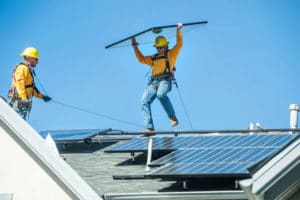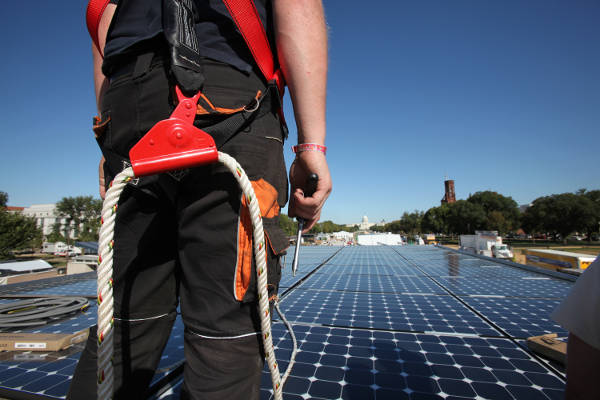- California's recent policy shift has led to a sharp decrease in the viability of the rooftop solar industry, with compensation for surplus power drastically reduced.
- This change not only affects business operations but also raises broader environmental concerns.
- The state's approach to solar energy is now at a crossroads, balancing economic impacts against the urgent need for sustainable energy solutions.
In recent times, the rooftop solar industry in California’s Bay Area has faced significant challenges.
A pivotal change in state policy has drastically reduced the compensation homeowners receive for contributing surplus power back to the grid. This development has led to a sharp decline in new solar applications, reaching a low not seen in a decade, and has resulted in numerous layoffs in an industry that was expected to be at the forefront of sustainable and eco-friendly energy solutions.
Background and Industry Impact
Historically, homeowners with residential solar systems received substantial utility credits, enabling most systems to be financially viable within seven years.
However, post-April 15, 2023, the payoff period has extended to 11 years. This change does not affect existing systems, which will continue to receive prior compensation rates.
Barry Cinnamon, the owner of Cinnamon Energy Systems, highlights the detrimental impact on the economics of rooftop solar. Since the compensation reduction, there has been an approximately 80% drop in sales of rooftop solar setups, as reported by the California Solar & Storage Association. This downturn has led to significant job losses in the Bay Area and across California, affecting an estimated 2,700 jobs locally and 17,000 statewide.
The average solar owner now misses out on roughly $1,200 yearly savings. The effects are more pronounced in lower-income areas compared to the wealthier Bay Area. Moreover, the higher rates of solar installation in California households with median incomes have been adversely affected, making solar less accessible to middle-income families.

Solar installer carries a solar panel during an installation at a home in Ladera Ranch. (Nick Agro, Orange County Register/SCNG)
Corporate and Political Dynamics
Critics have raised concerns about the influence of political donations from PG&E and electrical workers unions on Governor Gavin Newsom’s appointments to the California Public Utilities Commission (CPUC). They argue that these appointments have skewed decisions in favor of making rooftop solar more expensive for consumers while benefiting large-scale solar projects financially advantageous to PG&E.
Despite PG&E’s claims of a “historic year” for solar applications, the reality post-implementation of the compensation cut tells a different story, with a significant decline in applications. This discrepancy raises questions about the utility’s commitment to supporting rooftop solar.
Environmental Considerations and the Future of Solar
The debate extends beyond financial implications to environmental concerns. Critics argue that the current policy favors large-scale solar projects at the expense of rooftop solar, which is essential for rapidly transitioning away from fossil fuels. This shift could have detrimental effects on biodiversity, as large solar projects often require the use of pristine natural landscapes, like the Mojave Desert, potentially harming local ecosystems.
The solution, as suggested by experts like Dustin Mulvaney, lies in a balanced approach that utilizes rooftop solar and less environmentally sensitive areas for larger installations. This approach would address both the biodiversity crisis and climate change more effectively.
Moving Forward
The situation in California’s rooftop solar industry reflects a complex interplay of economic, political, and environmental factors.
The shift in policy highlights the need for a more nuanced approach to solar energy—one that balances the immediate economic implications for homeowners and businesses with the broader environmental and societal benefits of transitioning to renewable energy. As the state grapples with these challenges, it becomes increasingly clear that fostering a diverse and resilient solar energy landscape is crucial for achieving long-term sustainability goals.













Comments